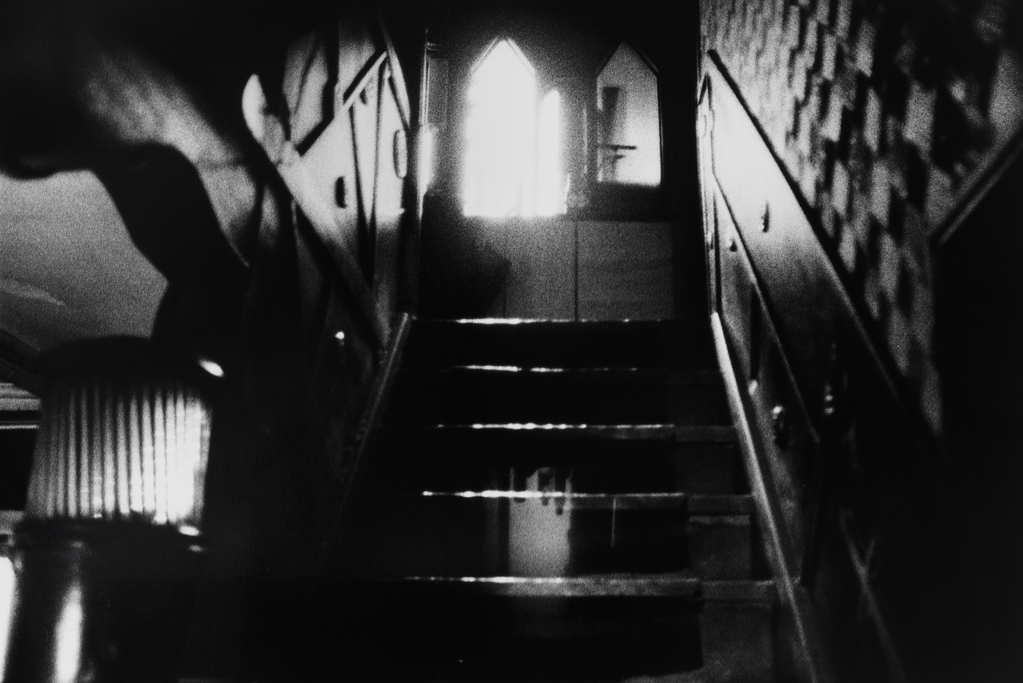Artist
Miyako Ishiuchi
Japanese
1947, Kiryu, Gunma Prefecture

Works in the Collection by Miyako Ishiuchi
-

Miyako Ishiuchi
Apartment #69
1978 -

Miyako Ishiuchi
Endless Night 2001 #52
1979, printed 2001 -

Miyako Ishiuchi
Endless Night #13
1979 -

Miyako Ishiuchi
Yokosuka Again #43
1980, printed 2002 -

Miyako Ishiuchi
Bay Side Court #83
1988-1989 -

Miyako Ishiuchi
Scars #12, New York
1994 -

Miyako Ishiuchi
Scars #7 (Scald 1960)
1995 -

Miyako Ishiuchi
Scars #22, New York
1996 -

Miyako Ishiuchi
Scars #13 (Accident 1976)
1996
Essays and Artist Talks
- The end of the 1950s and the early years of the following decade marked an astonishingly rich transitional moment in the history of photography in both the United States and Japan. While a long tradition of photography existed in Japan before this period, the country’s relationship with the U.S. after World War II seems to have instigated a distinctive and wide-ranging reexamination of the medium—a reaction against classic photojournalism and prewar aestheticism in favor of more personal and expressive picture making. Several key exhibitions in the United States in the 1970s drew attention to these shifts, highlighting not only new currents in Japanese photography but also the important ties between Japanese photographers and the Americans who were looking at their work with interest. By the 1970s Japan had fully recovered from its postwar economic hardships and was experiencing a period of prosperity that would lead to the “bubble economy” of the 1980s. The abundance of the times and the lifting of restrictions on travel inspired a generation of young people to leave Japan and go abroad—often to the United States. Among them were photographers such as Eikoh Hosoe, who visited the U.S. frequently (he spoke fluent English, which was extremely useful); Ikko Narahara, who stayed in America for four years and studied with Diane Arbus; Ken Ohara, who has lived and worked in the U.S. since 1962; and Kikuji Kawada, Keizo Kitajima, and Takuma Nakahira, who traveled to Europe and mainland Asia. These excursions, often lasting years, were part of a larger surge of exploration of the U.S. and Europe by Japanese artists in many media. The issues that occupied Japanese photographers during this time and the ways they engaged with them were in some cases responses to The Family of Man, a landmark exhibition organized by the Museum of Modern Art (MoMA), New York, that traveled to Japan in 1956.[1] The show included 503 photographs made in 68 countries—mainly journalistic works, presented with the intention of generating a sense of world community and of drawing attention to the dangers of waging war in the new atomic age (fig. 1). Edward Steichen, the charismatic director of MoMA’s photography department, asked for Yasuhiro Ishimoto’s help with the Japanese version of the show, having previously met the photographer and displayed his work at the museum. Ishimoto’s role, however, was ultimately minimal; instead he became a central figure in the transition of Japanese photography toward a new kind of expression.[2]
related exhibition

related exhibition
Photography Now
China, Japan, Korea
September 12–December 20, 2009
Drawn entirely from SFMOMA’s collection, Photography Now showcases pictures by nearly 30 contemporary artists working in China, Japan, and Korea. Documentary work from China depicts a shifting culture, in particular rapid urbanization and the effects of industrialization on society. Inspired by Robert Frank, Luo Dan journeyed from Shanghai to Tibet, making pictures that explore dramatic economic changes across China. In Japan, Rinko Kawauchi makes lyrical pictures that focus on the poetic details of daily life, and Yasumasa Morimura examines the nature of cultural identity through appropriation. Korean photographer Bohnchang Koo’s minimal photographs of ordinary architectural elements reflect upon the passage of time.
This exhibition is organized by the San Francisco Museum of Modern Art and is generously supported by the E. Rhodes and Leona B. Carpenter Foundation.
Go to Exhibition
Please note that artwork locations are subject to change, and not all works are on view at all times.
Only a portion of SFMOMA's collection is currently online, and the information presented here is subject to revision. Please contact us at collections@sfmoma.org to verify collection holdings and artwork information. If you are interested in receiving a high resolution image of an artwork for educational, scholarly, or publication purposes, please contact us at copyright@sfmoma.org.
This resource is for educational use and its contents may not be reproduced without permission. Please review our Terms of Use for more information.









